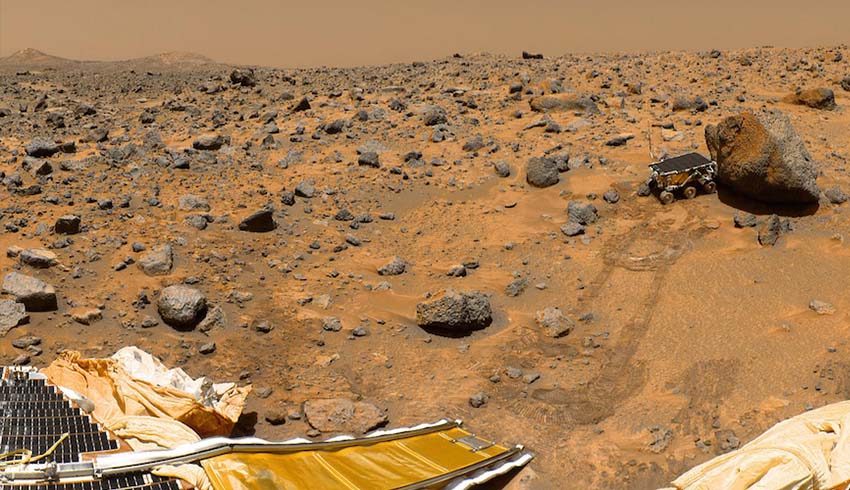NASA ran into a problem with one of its Mars experiments in which a small probe called the Mole was supposed to dig its way some five metres into the planet surface to gauge heat escaping from the interior.
It does that by self-hammering using its pointed nose.
But the Mars surface proved much firmer than expected and the Mole has so far only managed to partially bury itself.
Just like in home gardening, there were concerns that a rock could be blocking progress.
Scientists on Earth set about investigating how to accelerate the digging process and appear to have succeeded by using the NASA's InSight spacecraft’s robotic arm.
In the last week, the Mole has dug nearly two centimetres.
NASA said while modest, this progress was significant.
NASA said the movement was the result of a new strategy, arrived at after extensive testing on Earth, which found that unexpectedly strong soil is holding up the Mole's progress.
The Mole needs friction from surrounding soil in order to move: without it, recoil from its self-hammering action will cause it to simply bounce in place.
The InSight mission is led by the NASA Jet Propulsion Laboratory (JPL) in California. There, scientists tested the robotic arm's movement using full-scale replicas of InSight and the Mole.
Pressing the scoop on InSight's robotic arm against the Mole, a new technique called "pinning", appears to provide the probe with the friction it needs to dig on.
NASA said since 8 October, the Mole has hammered 220 times on three separate occasions.
Images from the spacecraft's cameras have shown the Mole gradually progressing into the ground.
NASA acknowledges it will take more time and hammering to determine how far the Mole can go.
The Mole is part of an instrument called the Heat Flow and Physical Properties Package (HP3), provided by the German Aerospace Center (DLR).
"Seeing the Mole's progress seems to indicate that there's no rock blocking our path. That's great news! We're rooting for our mole to keep going," said HP3 principal investigator Tilman Spohn of DLR.
"The Mole still has a way to go, but we're all thrilled to see it digging again," said Troy Hudson, the NASA JPL engineer and scientist who has led the Mole recovery effort.
"When we first encountered this problem, it was crushing. But I thought, 'Maybe there's a chance; let's keep pressing on.' And right now, I'm feeling giddy."
The InSight mission aims to discover more about the Mars interior. Onboard science packages were mostly developed by European companies.
The probe successfully landed on the Mars surface in November last year. In April, the seismic probe reported its first Marsquake.

